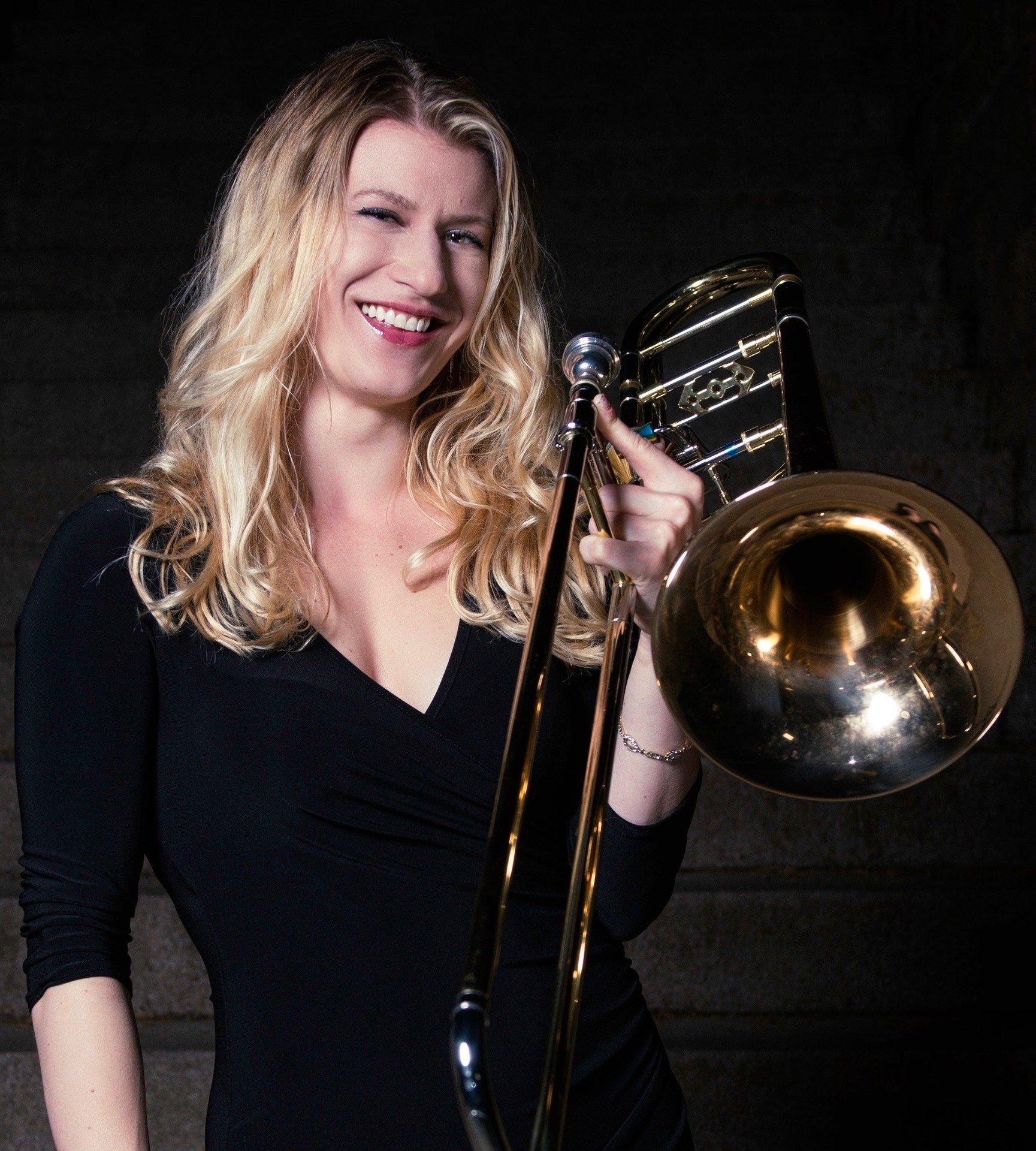
Brittany Lasch's 'Book of Arias' helps trombonists perfect the cantabile style of playing
Elevating the songlike style of trombones
Dr. Brittany Lasch believes the trombone is the most vocal instrument besides the human voice.
The Bowling Green State University assistant professor in the College of Musical Arts and principal trombonist with the Michigan Opera Theatre is on a mission to help bolster the image of the trombone beyond its “Seventy-Six Trombones” reputation.
In her recently published “Book of Arias - Trombone,” Lasch is determined to help trombone players elevate their level of expression when they perform.
Her hope is that trombonists who practice the arias in the book can perfect the cantabile or songlike style of playing the instrument.
“The trombone, in my opinion, is the closest thing to the human voice. We spend so much time on the things we should, like perfecting our technique and our range, but we really need to elevate the instrument to the same level as violin and singers because we have the ability. We are the most vocal instrument besides the human voice,” Lasch said.
The book offers “a great way to practice sounding vocal and taking time with expression as trombone players. Even if we are playing in operas such as (Giuseppe) Verdi’s, a lot of those trombone parts are very percussive and technical; we don’t get to play any of the beautiful lines like in ‘Ave Maria;’ so what better way to learn the cantabile style than with actual arias?”
Lasch, with the help of William Short, principal bassoonist with the Metropolitan Opera, have selected 33 opera arias that include familiar composers such as Wolfgang Amadeus Mozart, Vincenzo Bellini and Richard Wagner. The book also introduces readers to a group of underrepresented composers, including Carlos Gomes, Giulio Caccini, Pauline Viardot and Harry Freeman.
“A lot of the composers are going to be newer to people, for instance, Harry Freeman, who I had never heard of him or the more than 20 operas that he composed that are not currently performed as part of the repertoire. I hope that by having ‘Voodoo’ (Freeman’s three-act opera from 1914) in the book, people are going to start looking into more of his music and maybe get more of it performed,” Lasch said.
The underrepresented composers “have beautiful arias that really need to become part of the standard repertoire.”
The arias included in the book have only had suggestions and slight modifications to some of the articulation; Lasch has not changed any of the keys. Under each of the arias, the text has been included “just like if you were an opera singer,” Lasch said. “That helps the performer phrase, articulate and infuse dynamics.”
Trombone players also can read the text with its translation to help make a completely informed performance.
Another special feature of the book is that Lasch and Short have curated a list of their favorite recordings. On each page there is a QR code that can be scanned. Each QR code leads to a page on the website for each aria and contains elected recordings as well as PDFs of the piano part accompaniment.
“Too often in 2021, it’s too easy to go onto YouTube and click on the first link. Sometimes those are not always the best. With the book, you will be directed to the best links on your first click,” Lasch said.
Media Contact | Michael Bratton | mbratto@bgsu.edu | 419-372-6349
Updated: 07/14/2021 08:31AM
